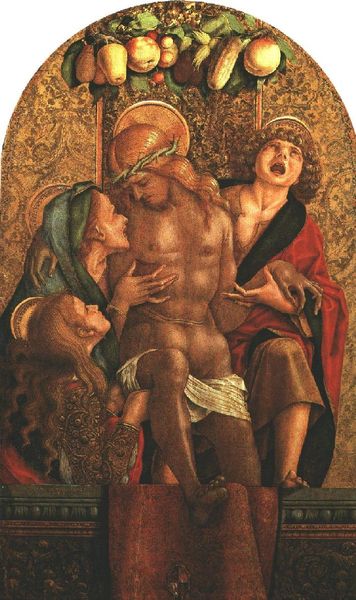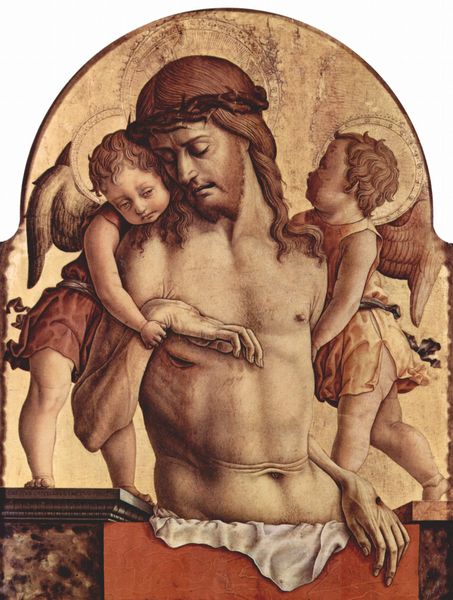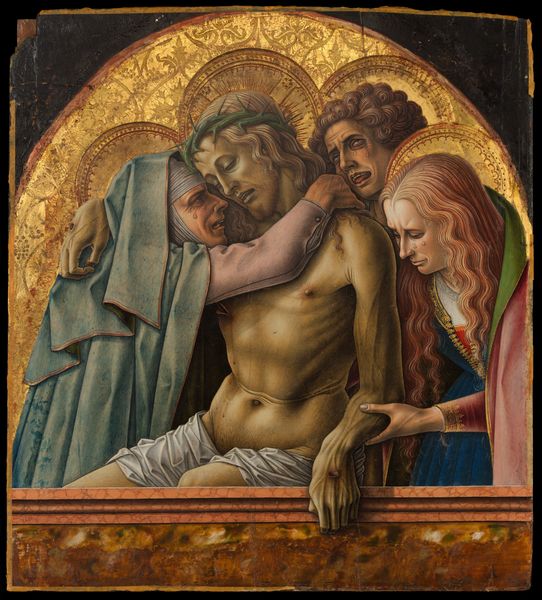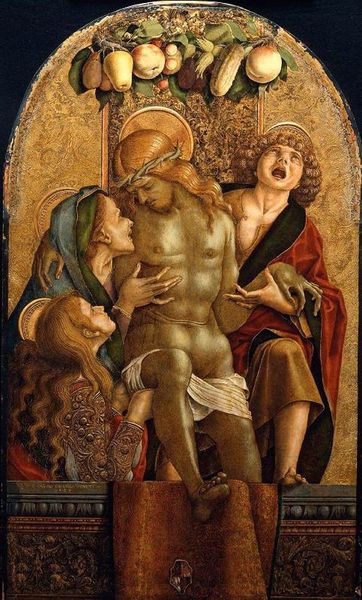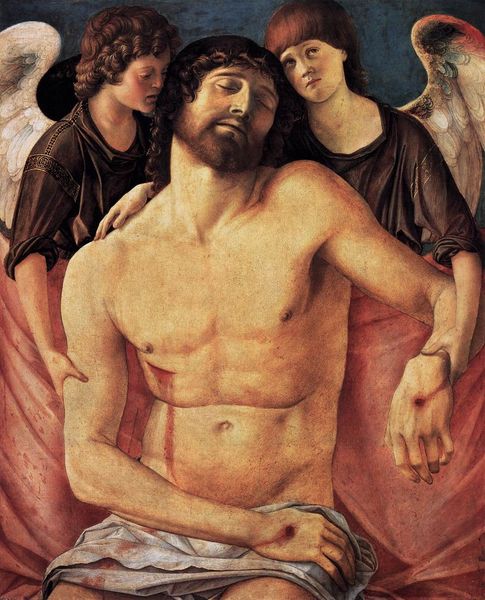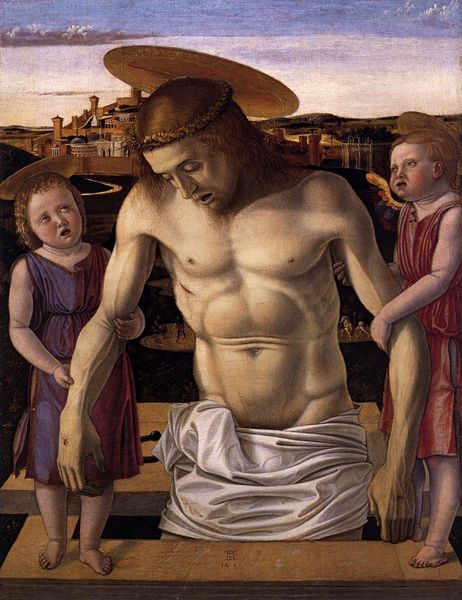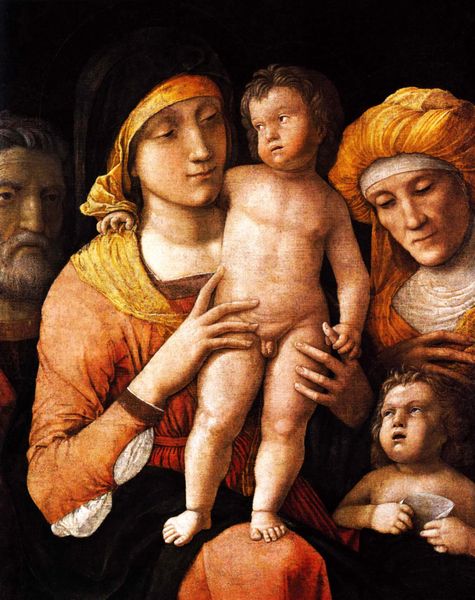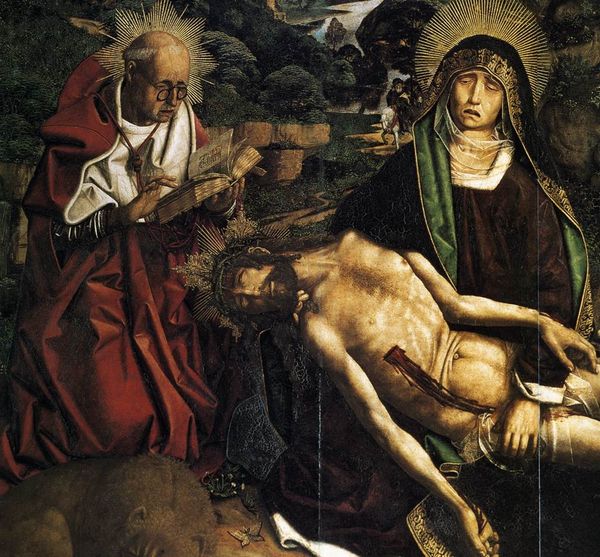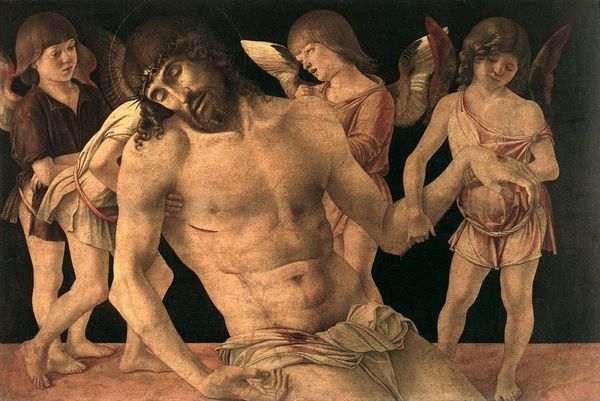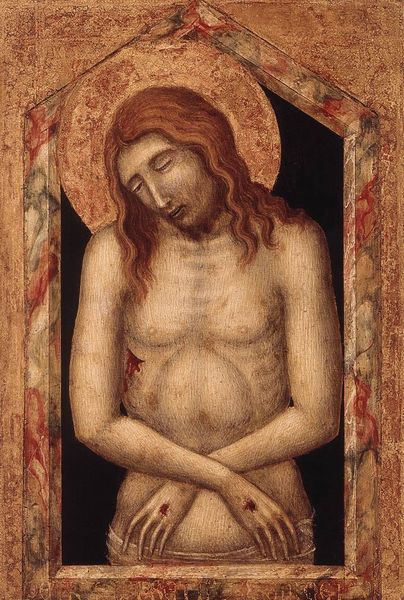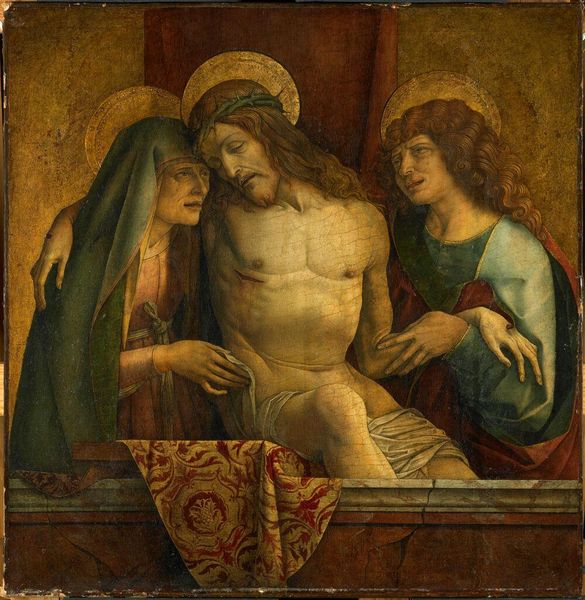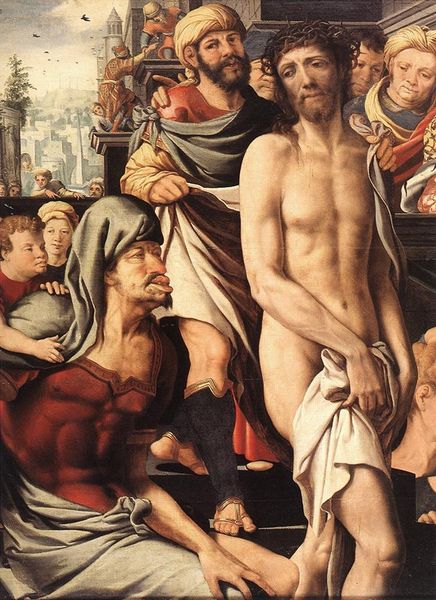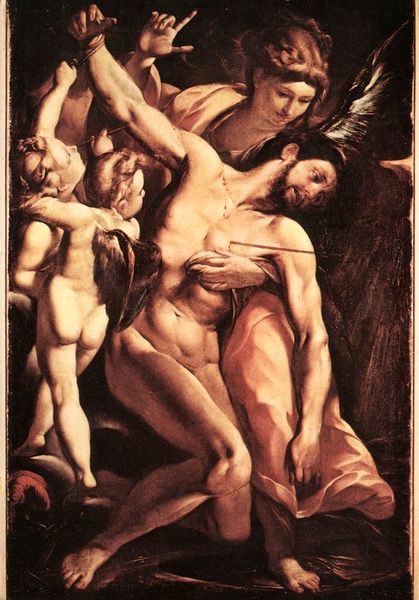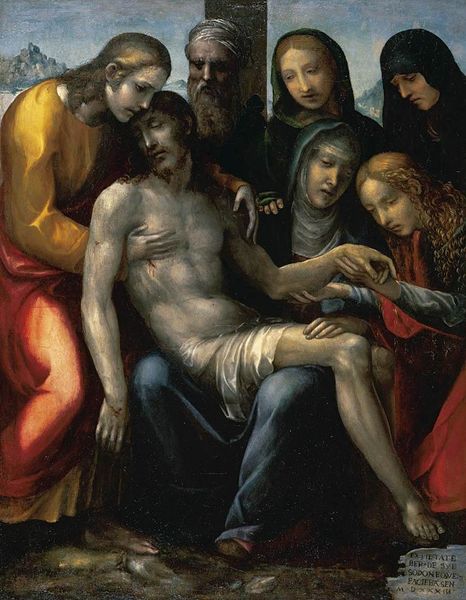
tempera, painting, oil-paint
#
portrait
#
medieval
#
narrative-art
#
tempera
#
painting
#
oil-paint
#
figuration
#
oil painting
#
jesus-christ
#
christianity
#
history-painting
#
italian-renaissance
Dimensions: 71 x 47 cm
Copyright: Public domain
Editor: This is Carlo Crivelli’s "Pietà," painted around 1470, using tempera and oil paint. The textures seem particularly striking; it has a solemn, almost tactile quality. What stands out to you when you examine this work? Curator: The materials and processes employed in creating this "Pietà" offer a profound understanding beyond its religious narrative. Look at the layering of tempera and oil – it signifies a transition in workshop practices, doesn't it? What did it mean to combine these techniques at that particular moment? Editor: That’s interesting, I hadn't considered the blending of painting methods itself holding significance. Why would this mixing of materials be relevant? Curator: It highlights a crucial tension: the established, guild-controlled tempera tradition versus the emerging possibilities of oil, perhaps signifying changing patronage models or even the accessibility of materials. Can we view the cherubs in the same way we look at the pigments? The cherubs display exaggerated grief that could very well highlight or exemplify consumer expectations. Does the pathos hold up? Editor: So you are suggesting even the emotion depicted can be viewed as product, subject to production standards. Curator: Exactly. It pushes us to consider the social and economic context of art production, beyond simply admiring aesthetic beauty. This piece prompts consideration of materials as carriers of cultural meaning, far removed from any notion of simple skill. Does exploring it this way impact your understanding of other Renaissance works? Editor: Definitely. Considering the art-making process and the materiality in art provides a perspective I never considered. I will look at this type of art very differently from now on! Curator: Precisely. By studying materiality, the historical conditions, the patronage and the choices made during production and by whom. With such study we reveal greater meaning about labor and the means of its production.
Comments
No comments
Be the first to comment and join the conversation on the ultimate creative platform.
